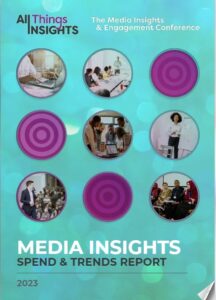Flipping the Script on Surveys
Conversational surveys are said to be more dynamic and adaptable than traditional survey methods. To be sure, surveys are a necessary and essential market research tool, but perhaps more static than what is evolving with AI. Enter conversational surveys, which can complement established surveys with a mix of qualitative and quantitative methods. These new age surveys are said to create a more engaging experience, producing more authentic and richer insights.
In Forsta’s blog, “Conversational AI: surveys that talk back,” the company details how “Conversational AI flips the script by turning surveys into real-time dialogues. Powered by natural language processing (NLP), this technology creates personalized, adaptive experiences that feel less like interrogation and more like a friendly conversation.”
Forsta describes these new tools as just more, well, conversational: “Imagine a participant being asked about their favorite coffee brand. With conversational AI, the survey doesn’t stop at “Brand A.” It follows up with meaningful, follow up prompts, like: “What do you love most about Brand A’s coffee? Is it the taste, the sustainability, or something else entirely?” Suddenly, the survey feels tailored, and the participant feels valued.”
The conversational survey flows with the participants’ personalized answers. AI, meanwhile, is continually monitoring data quality, refining questions and validating responses. For the corporate organization, this new method can derive richer insights with a larger scale in mind, beyond just small focus groups or interviews.
“One of the standout features of conversational AI is its ability to scale qualitative depth across a quantitative reach,” observes Forsta. Conversational AI bridges this gap. Other features of this conversational AI, according to Forsta:
- Open-end analysis: Summarize respondent verbatims, identifying themes and saving time manually analyzing reams of text.
- Open assist: Enrich your surveys with conversation. Follow-up prompts to open-ended responses keep respondents talking, giving you richer answers.
- Battle the bots: Integrations with sample providers allows it to fight fraudulent AI answers. AI itself can weed out the patterns that flag a generated survey response, keeping your data organic. Longer participant responses, encouraged by prompting, give this detection more to work with.
- API integrations: Some tools are able to integrate with additional AI tools. Add in voice-enabled surveys or chat/video bots.
Delivering More Resonant Insights
During TMRE 2025, the session, “Why the Future of Consumer Insight Will be a lot More Human” will be presented by John McGarr, SVP, Growth Strategist at Protobrand.
The days of dry surveys and rigid Likert scales are behind us. In this session, we’ll dive into how AI-Powered conversational surveys – designed with principles of behavioral science – transform the way we understand human behavior. Discover how this human centered approach allows people to share their emotions, beliefs, and motivations in ways traditional methods simply can’t. We’ll showcase how Colgate-Palmolive uncovered deep emotional drivers to help create a distinctive and resonant human-centered shopper insights narrative. The result? Deeper insights and better business decisions.
1. Why traditional research methods fall short: You’ll learn why standard surveys and Likert scales often miss the emotional and motivational depth behind consumer decisions—and how this gap can limit brand impact.
2. How AI + behavioral science unlock richer insights: Discover how conversational, AI-powered tools—designed with behavioral science principles—enable more authentic, human responses that reveal what truly drives behavior.
3. What a human-centered insight approach delivers in practice: See how Colgate-Palmolive applied this method to uncover powerful emotional drivers leading to a more resonant shopper insights narrative and more effective decision-making.
Getting In on the Conversation
Conversational AI is indeed flipping the script on traditional survey methodologies, and creating some fun surveys along the journey. It also creates opportunities to customize surveys for each and every participant.
As Forsta notes, “One of the standout features of conversational AI is its ability to personalize every interaction. By analyzing previous answers and adjusting in real time, AI is capable of creating a unique survey path for each participant.”
Making a survey feel more like a conversation is beneficial to the process, and can lead to richer, more actionable insights. The next era of insights seems promising with such AI-enabled technologies. Forsta relates, “The integration of conversational AI into survey methodologies is more than a trend. It’s part of the dawn of an era of interconnected and deeper insights. By combining scalability with personalization, this technology opens new doors for understanding human behavior.”
Video: “Al + HI Guide: Qualitative Research Meets AI: Insights from AI-Moderated Interviews,” courtesy of CMB.
Contributor
-

Matthew Kramer is the Digital Editor for All Things Insights & All Things Innovation. He has over 20 years of experience working in publishing and media companies, on a variety of business-to-business publications, websites and trade shows.
View all posts




































































































































































































































